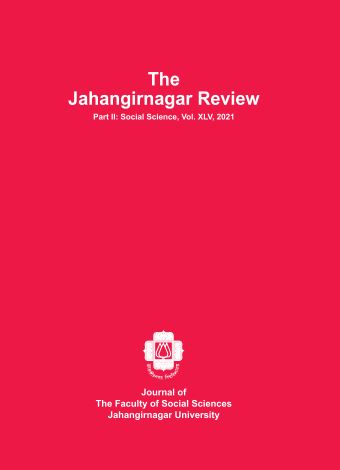Assessment of Road Network Accessibility in Savar Upazila: A Geospatial Approach
Main Article Content
Abstract
Transport network plays a vital role in sustainable development and provide access to people, places, goods and services. The transport network analysis provides a complete scenario of a region's transportation facility with geographical distribution pattern. The purpose of this research is to conduct a structural examination of the road network of Savar Upazila, the outskirts of Dhaka city, where traversed by a prominent national highway (Dhaka-Aricha, N5) that also passes the concentric industrial export processing zone surrounding Dhaka. The research has applied road network connectivity and accessibility analysis according to graph theory. The various indices of connectivity and accessibility were accomplished in Microsoft Excel. Google Earth Pro has been used for road database extraction. Nodes and Arcs have been assessed and identified by using ArcGIS tools. Although, database conversion, assessment and representation of maps were conducted with ArcGIS. This research reveals the most accessible zone is Savar Paurashava and the significantly less accessible zone is Amin Bazar, Yearpur, and Shimulia in Savar Upazila. The low road network connectivity indices of α, β, γ of Savar Upazila chronologically 0.026, 0.94, 31٪ which indicates the road network system is inferior and not well connected. However, the connectivity and accessibility indices have mostly remained consistent, showing that this study area's physiographic circumstances are nearly identical and that road connectivity is inadequate. In this circumstance, the road network structure needs to be enhancement of existing linkages reflected in variations in nodal accessibility in Savar Upazila.

